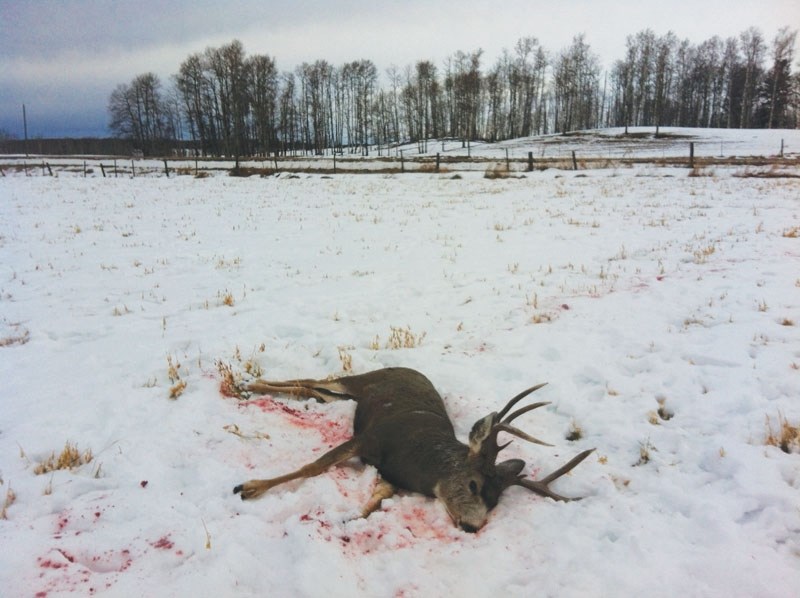The level of poaching that occurred through this year's hunting season is comparable to last year's, say officials.
“I would say it's comparable -- not more, not less. One thing I did notice is that we had a lot more night hunting cases,” said Adam Mirus, fish and wildlife officer for the Olds and Sundre district.
It was a busy season with many charges laid and three check stops. One was set up south on Highway 22, one in Caroline and one on Highway 11 and Highway 22.
Officials are seeking tips from the public on a poaching case where a buck mule deer was shot and left to rot north of Water Valley on the Big Prairie Road, near Rge. Rd. 5.1 on Nov. 29.
“It's quite a waste when you consider a deer can feed a family for a few months,” he said
Officials are also seeking tips on a case where a buck mule deer was shot one mile north of Highway 582 on Rge. Rd. 766 on Nov. 27. The head had been removed from the body.
“It was shot and left out in the field and the following day someone came and cut the head off,” he said.
“You get people that are trophy hunters and they look at the size of an animal's rack as small as small and large as better. So because this animal had a big rack on it they decided to poach it.
“A normal person hunting this obviously would take the meat and everything else whereas this person poached this and just took the head.”
He is asking for anyone with any information regarding either incident to call Report a Poacher at 1-800-642-3800. Callers may remain anonymous and could be rewarded with up to $2,000.
Poachers interfere with population management, he said.
“We're trying to manage the resource – whatever species it is – moose, deer, elk, and by managing it we're trying to come up with a number that the countryside can sustain and the population stays healthy and that the numbers don't get too low,” he explained.
“For example, with moose, south of Sundre is an area where we have a moose season and we've recently had a moose poached there. That person doesn't even have a licence.”
It takes about four to five years to draw for a moose, he said.
“We've had people who just take it upon themselves to say they don't want to go through that process and they just want whatever animal and they go and they shoot it,” he said.
“We can manage the licences that we give out and target the numbers that we want to harvest out of a population, but when we get people poaching and shooting animals without licences that's not accounted for in our statistics.”
However, he said modern technology brings more information forward from the public.
“We are quite often getting videos from iPhones and pictures and that, which are very helpful because we get a picture of a licence plate or a vehicle or a person and it really helps us in our investigation,” he said.
The archery hunting season started at the end of August and the rifle season started Nov. 1. Cow elk seasons are still going until Dec. 20 and then they will close and reopen from Jan. 1 to Jan. 20, he said.
“The reason that we do that is to manage the population of the elk better, because what happens is they tend to go into haystacks,” he said.
“We get hunters to shoot them when they're going to those kinds of locations so it kind of puts them back into the bush and out of the farmers' haystacks.”
Twelve deer and three elk were donated to the Hunters who Care program, which is a provincewide program that was recently introduced to the area. The animals were processed locally and donated to the Mountain View Food Bank.
“It was a great success this year. We had lots of local people donating their deer or moose or elk,” he said.



